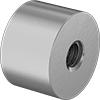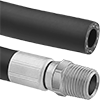Filter by
Material
Fitting Type
Fitting Connection
Mounted Bearing Type
Flange OD
Flanged Connection Surface
Bolt Circle Diameter
Fitting Material
For Use With
Thread Type
DFARS Specialty Metals
Shaft Mount Type
Power Transmission
Fluid Handling
Building and Machinery Hardware
Material Handling
Facility and Grounds Maintenance
Fastening and Joining
Heating, Ventilation, and Air Conditioning
Fabricating and Machining
Sealing
































































